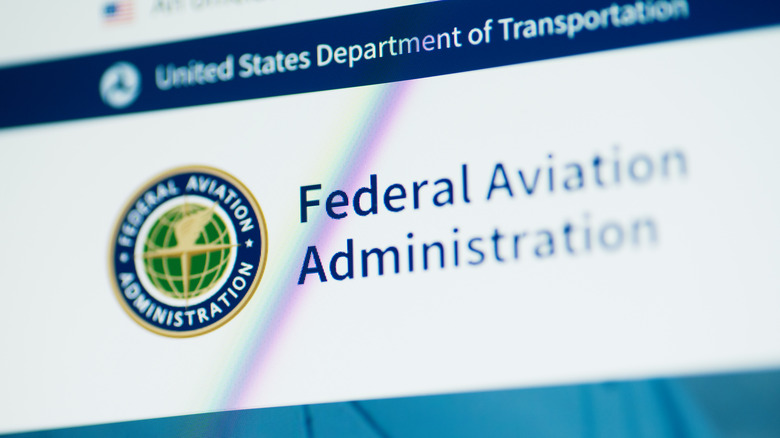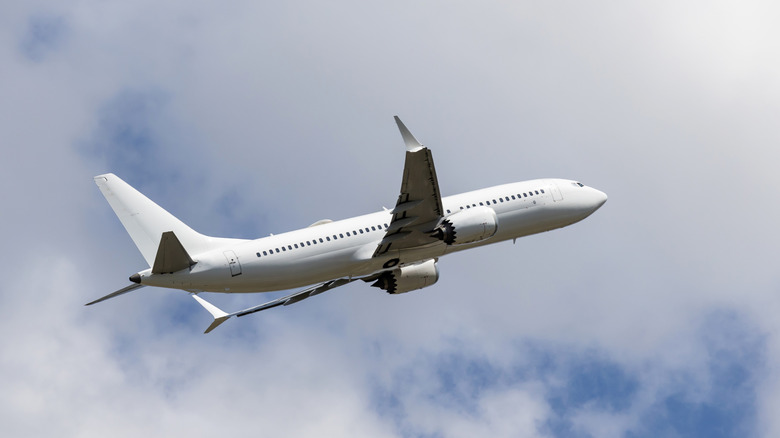The FAA's Updated Rule For Emergencies Is Targeted To Stop Airline Passengers From Engaging In One Unruly Behavior
For many travelers, flying is the safest, quickest, and most convenient method to get from point A to point B. However, while commercial air travel remains safer than other alternatives like driving or taking a train, recent airline emergencies have turned into major headlines. For example, in February 2025, a Delta flight crashed in Toronto, and the plane itself was upside down on the tarmac. Similarly, in July, passengers aboard an American Airlines flight had to evacuate when the landing gear caught fire.
But these harrowing emergencies highlight more than just the preparedness of flight crews and the exit row perk that isn't what travelers think. When looking at videos of these evacuations, one may notice that many passengers are fleeing with their carry-ons. According to the Federal Aviation Administration's (FAA) evacuation procedures, this practice is prohibited, but it seems that people are doing it anyway. To help combat this problem, the FAA issued a Safety Alert for Operators (SAFO), instructing airlines and staff members to address the issue and work on improving operations and best practices accordingly.
Some of the recommended strategies include adjusting safety warnings and pre-flight checklists to notify passengers that they should not bring carry-on luggage with them during an emergency. The SAFO also suggests that flight crews should update their emergency evacuation procedures to mitigate non-compliance as much as possible.
A primer on the new FAA instructions
Although several high-profile airplane evacuations have drawn attention to the unruly behavior of passengers prioritizing luggage over safety, there's another element involved in this decision. In May 2024, the Emergency Vacating of Aircraft Cabin (EVAC) Act was signed into law. This act is designed to compel the FAA to conduct thorough research about how long it actually takes to evacuate a plane under real-world conditions and make recommendations accordingly.
Before this act, the FAA's regulations stated that an aircraft should be evacuated within 90 seconds. However, this timeline failed to account for different variables, such as elderly passengers, children, and whether people stopped to grab carry-ons. Since these factors can greatly increase evacuation times and risks, it's imperative for the FAA and airlines to understand how to address and react to them in an emergency situation.
At the time of this writing, the FAA has not completed a report with an updated evacuation timeline. According to the EVAC Act, the agency had a deadline of May 16, 2025.
What the FAA's instructions mean for passengers
A big reason why flying is so safe for travelers is that there are already so many procedures and regulations in place. Everything from opening the shades during takeoff and landing to flight attendants taking note of the kind of shoes you wear on a plane is designed to keep everyone safe during an emergency. However, grabbing luggage before evacuating a plane can increase risks in multiple ways. First, during the commotion, it's easy to hit others with the luggage as it's coming out of the overhead compartment. Similarly, heavy bags can cause injury when sliding down to the ground, or they can simply get in the way and block people from exiting quickly and efficiently.
All passengers should recognize that the risk isn't worth it. In an extreme situation, grabbing a carry-on can put lives in danger by slowing the evacuation. In a relatively minor emergency, passengers can often wait to get their luggage until after the situation resolves. At the time of this writing, it's not clear how these instructions will impact travelers in non-emergency situations, but one likely change is that safety briefings will start notifying passengers to leave their carry-ons behind.


